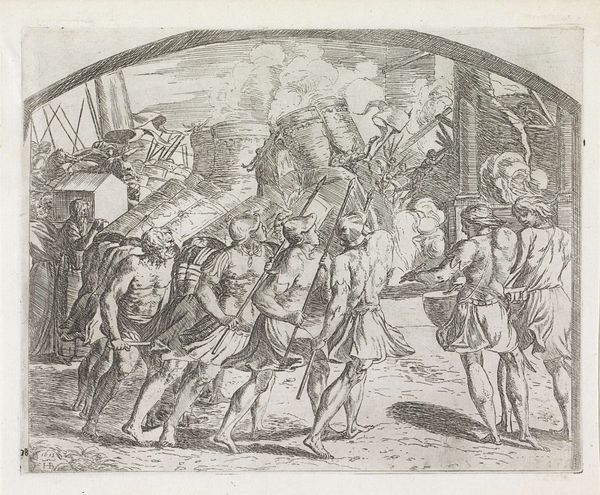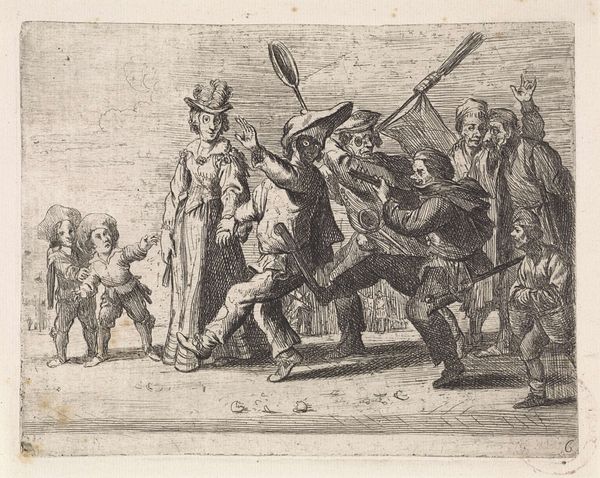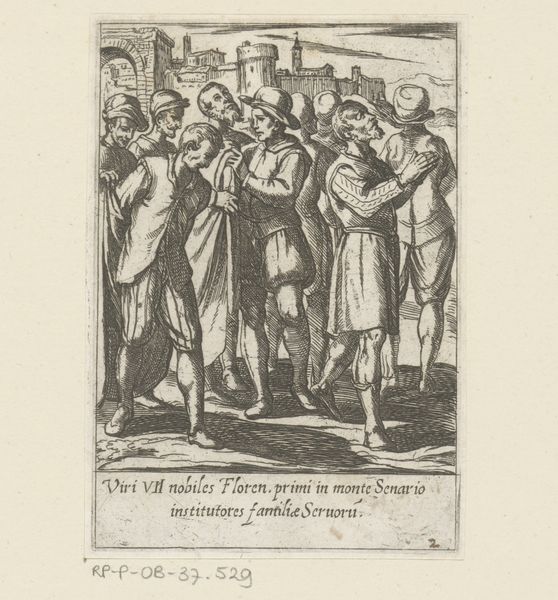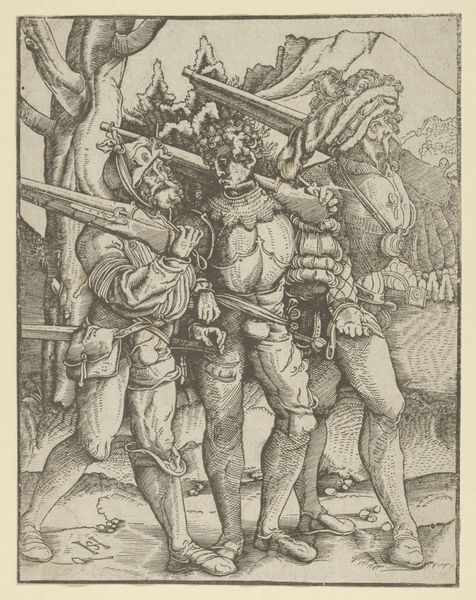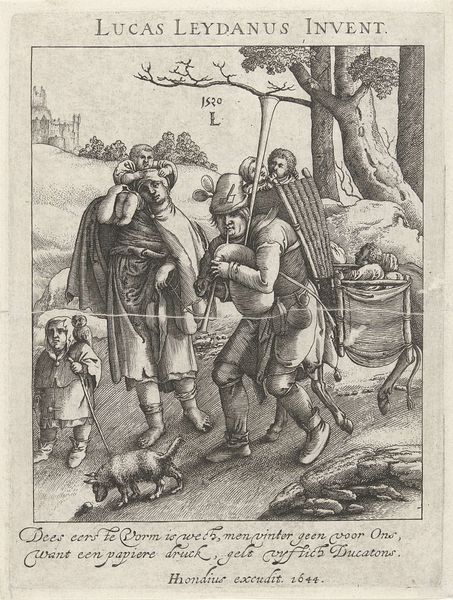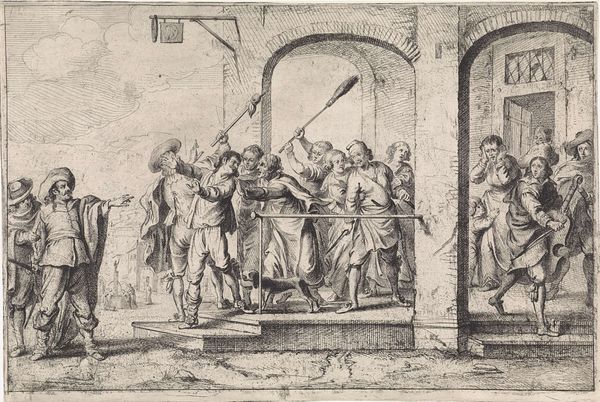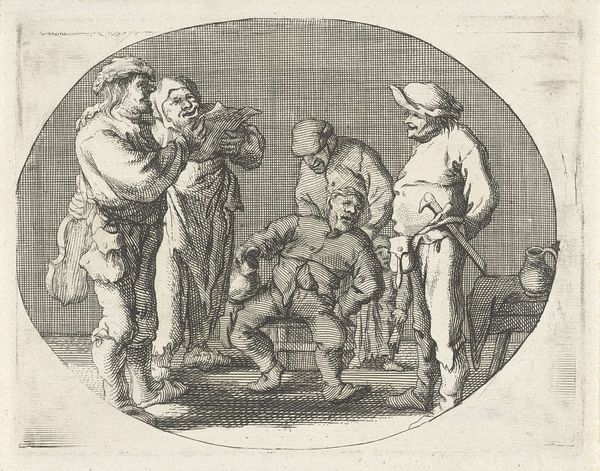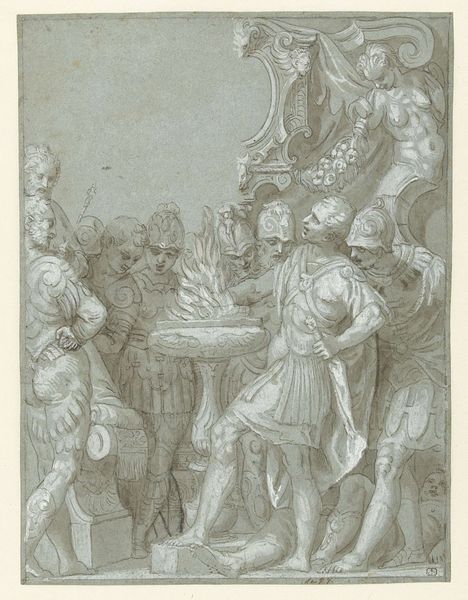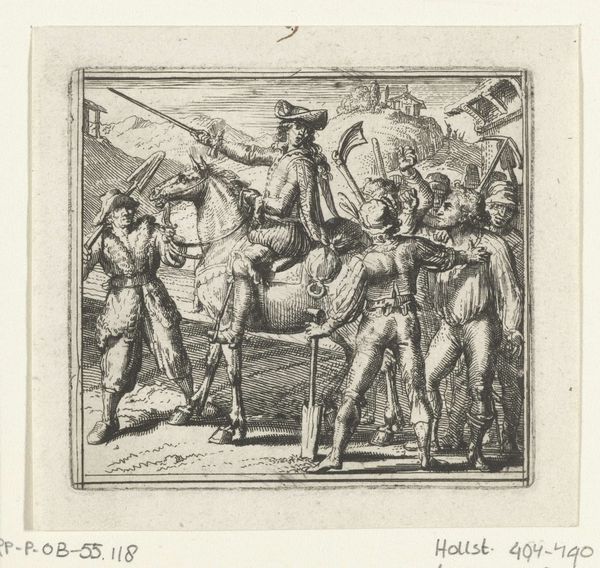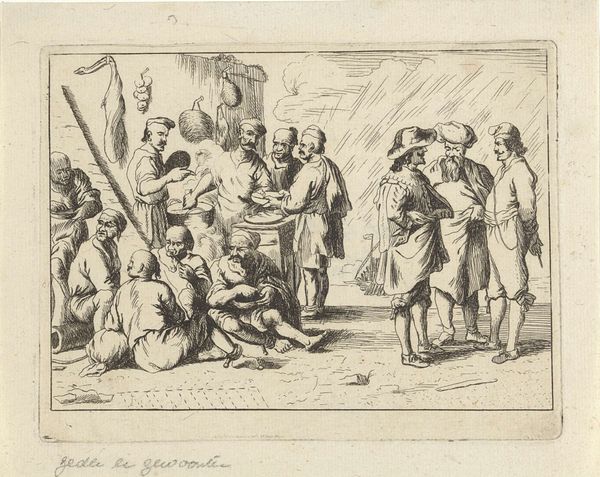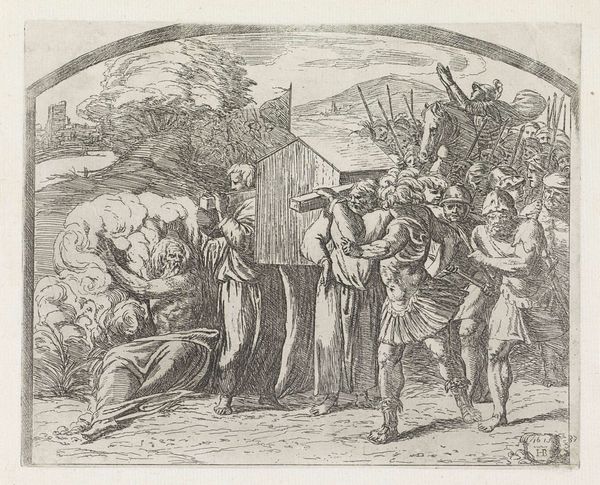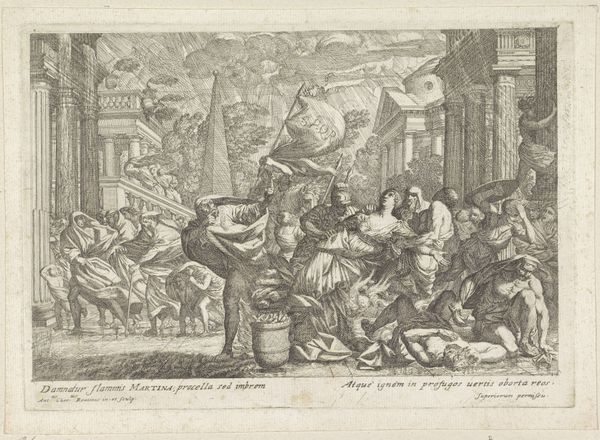
drawing, print, engraving
#
drawing
# print
#
figuration
#
11_renaissance
#
pen-ink sketch
#
line
#
history-painting
#
northern-renaissance
#
engraving
Dimensions: height 191 mm, width 159 mm
Copyright: Rijks Museum: Open Domain
Curator: Welcome. We’re standing before "Kruisdraging," a print realized by Augustin Hirschvogel around 1545. Hirschvogel was working during the Northern Renaissance, and as we examine this piece, keep in mind his roots in both cartography and glass-painting. Editor: Immediately, what strikes me is the swirling chaos. The entire composition feels unstable, almost like a tornado of figures centered around this one kneeling figure. It makes me uneasy, a sensation of claustrophobia. Curator: I concur. Hirschvogel constructs a rather dynamic interplay of line, note his technique using engraving that leads our eye across this densely packed scene. The Northern Renaissance predilection towards intricate detail becomes apparent as you follow the play of light and shadow through the varied tonalities he coaxes from such rigid means. The lines are not merely descriptive but constitutive of the emotive quality we both recognise, in our own way. Editor: And yet, paradoxically, it feels static, caught in a single moment. I get the impression he wants to say something more about human nature here. What strikes me in particular, beyond all compositional elements and historical reference points, are faces: each expression screams of doubt. What were people around him feeling when Christ knelt? The faces are very dark. Did those looking on actually believe that he did something horrible, I ask myself? It appears as if some were simply curious. What is Hirschvogel aiming to capture? This eternal struggle to trust or understand that has never died. Curator: Consider how the archway looms behind the group. We have to explore not only how Hirschvogel employs a spatial device—a type of semiotic marker for transitions, thresholds, which add psychological dimension to the artwork— but also observe what might escape direct translation for our times, specifically, cultural or religious referents. Editor: Art can also teach about cultural transitions in human thought. That this particular struggle, beautifully but painfully realized with a collection of stark engraved lines, might yet resolve some lingering anxieties—either the artist's, mine, or maybe even yours.
Comments
No comments
Be the first to comment and join the conversation on the ultimate creative platform.
